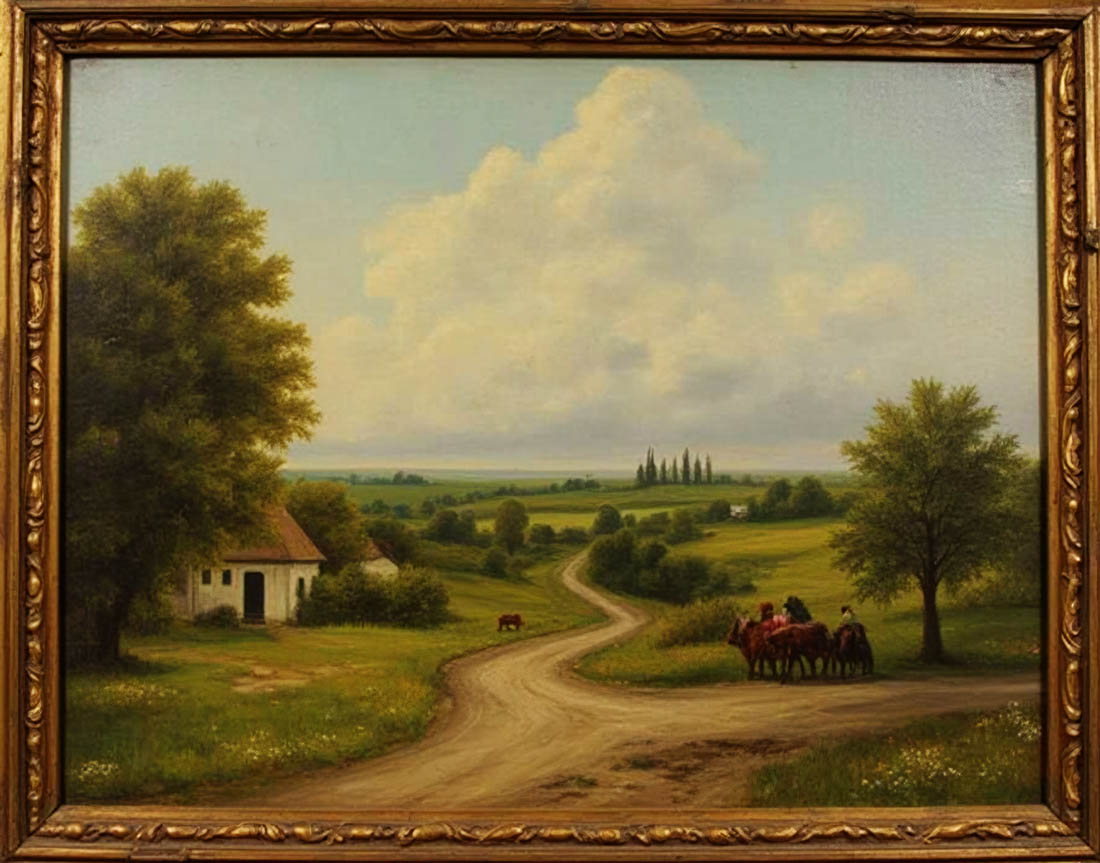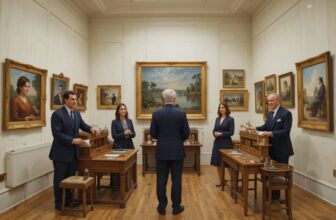
How to Spot a Future Masterpiece in Today’s Market
In the fast-changing world of art, design, and collectibles, everyone dreams of discovering the next masterpiece before it becomes legendary. Whether you’re an investor, a collector, or simply someone who appreciates cultural treasures, the ability to recognize future classics in today’s marketplace can yield enormous rewards, both financially and personally.
But spotting a future masterpiece is not just about luck. It requires a trained eye, historical awareness, market knowledge, and an understanding of cultural trends. In this deep-dive guide, we’ll break down the essential principles of recognizing potential masterpieces across art, design, and collectibles, while offering practical advice for navigating today’s crowded markets.
What Is a “Future Masterpiece”?
Before learning how to spot one, it’s important to define what we mean by a “future masterpiece.”
Aesthetic Excellence: The work demonstrates a high level of creativity, originality, and technical skill.
Cultural Relevance: It speaks to the zeitgeist of its time but has the potential to transcend it.
Rarity: Scarcity adds long-term value, whether due to limited production, unique execution, or singular vision.
Historical Significance: A masterpiece often reflects a pivotal shift or innovation in its field.
Enduring Appeal: It has qualities that will resonate with audiences not just today but decades from now.
Essentially, a future masterpiece is something that will eventually be recognized as iconic, whether in art museums, design history books, or auction houses.
Why Spotting a Future Masterpiece Matters
The ability to identify future masterpieces offers multiple benefits:
Financial Opportunity – Investing early can lead to extraordinary returns. Works that once sold for hundreds can later sell for millions.
Cultural Contribution – Collectors who recognize and preserve emerging talents play a role in shaping cultural heritage.
Personal Satisfaction – Owning a piece that later becomes a classic is immensely rewarding.
Legacy Building – Such discoveries often become heirlooms passed through generations.
In short, spotting a future masterpiece isn’t only about money, it’s about being part of cultural history.
How Past Masterpieces Were Once Overlooked
To understand how to recognize future classics, it helps to study the past. Many works we now consider masterpieces were dismissed in their own time.
Vincent van Gogh sold only a few paintings during his life, yet his works are now among the most valuable on Earth.
Claude Monet’s Impressionism was rejected by traditional art institutions but later revolutionized modern painting.
Mid-century furniture by designers like Eames and Wegner was once seen as everyday décor, but today fetches high prices at auctions.
First-edition books and vinyl records that were once common are now cultural artifacts.
These examples show that market recognition often lags behind true artistic innovation.
The Key Factors in Spotting a Future Masterpiece
1. Originality and Innovation
A masterpiece often challenges conventions. It introduces something new, whether a technique, subject matter, or perspective. When evaluating a work, ask:
Does this piece push boundaries?
Does it introduce a fresh visual or conceptual language?
Does it feel unlike anything else in the current market?
Originality is a strong predictor of future significance.
2. Quality of Craftsmanship
No matter how avant-garde, a future masterpiece demonstrates skill and mastery. Even when a work looks spontaneous or abstract, there is usually a deep technical foundation. Look for:
Attention to detail
Quality of materials
Cohesion between concept and execution
Poorly made works rarely stand the test of time.
3. Cultural Resonance
Masterpieces capture something essential about their era but also remain timeless. They may reflect social issues, technology shifts, or emotional truths. Ask yourself:
Does this work reflect a broader cultural moment?
Will it still be meaningful decades from now?
Art that speaks both to the present and the universal often achieves masterpiece status.
4. Rarity and Scarcity
Rarity creates demand. Whether it’s a limited edition, one-of-a-kind creation, or a product from a short-lived artist, scarcity increases long-term value. For instance:
Early prints by major artists
Prototype designs in furniture or fashion
Limited production runs of sneakers, watches, or NFTs
Future masterpieces often come from rare pools.
5. The Artist’s Trajectory
Future masterpieces are often tied to creators who later achieve recognition. Indicators of an artist’s trajectory include:
Consistent body of work
Innovation across multiple projects
Critical or institutional recognition (gallery shows, museum acquisitions, academic interest)
Dedication to refining their craft over time
Sometimes, an early overlooked work becomes the signature masterpiece when the artist gains recognition later.
6. Market Signals
While not the sole indicator, market signals can help. Keep an eye on:
Auction results
Gallery representation
Media coverage
Social media trends
Just be cautious: hype can inflate value temporarily. Look for enduring patterns rather than momentary buzz.
7. Emotional Impact
Often, the best predictor is intuitive: a future masterpiece stirs deep emotion. If a work creates a lasting impression, chances are it will resonate with others long-term.
Where to Look for Future Masterpieces
Emerging Art Scenes
Local art fairs, university exhibitions, and small galleries are fertile ground for discovering unrecognized talent.
Digital Platforms
Instagram, TikTok, and NFT marketplaces allow you to spot rising stars before they hit mainstream recognition.
Estate Sales and Auctions
Many hidden gems come from overlooked estates, second-hand shops, or regional auctions.
Independent Design Studios
Furniture, fashion, and industrial design studios often produce groundbreaking work before large brands adopt it.
Collectibles Markets
From trading cards to vintage vinyl to sneakers, collectibles often contain overlooked items that later explode in value.
Case Studies: How Future Masterpieces Emerged
1. Basquiat’s Graffiti Roots
Jean-Michel Basquiat began as a street artist, dismissed by many. His raw, powerful style later reshaped contemporary art. Today, his early works are multi-million-dollar treasures.
2. The Rise of NFTs
In 2017, few predicted digital art would command such staggering sums. By 2021, Beeple’s “Everydays” sold for $69 million at Christie’s. Early NFT collectors who recognized potential made history.
3. Mid-Century Modern Furniture
Designs by Charles and Ray Eames were once seen as mass-market. Today, authentic vintage pieces are museum-worthy collectibles.
4. Sneakers as Cultural Icons
Nike Air Jordans were once just athletic shoes. Now, limited editions are auctioned at Sotheby’s alongside fine art.
These examples show that cultural context, innovation, and rarity transform everyday objects into masterpieces.
Practical Steps to Train Your Eye
Study Art History – Learn how masterpieces were identified in the past.
Attend Exhibitions – Seeing works in person builds intuition about quality.
Follow Critical Voices – Curators, critics, and art historians often spot trends early.
Engage in Communities – Forums, clubs, and online groups offer valuable insights.
Keep a Journal – Track artists, works, or designs you find compelling. Look for recurring themes.
The more you immerse yourself, the sharper your instincts will become.
Red Flags: What Not to Mistake for a Masterpiece
Overhyped Trends – Just because something is popular now doesn’t mean it will endure.
Mass Production – Works produced at scale without uniqueness often lose long-term value.
Lack of Depth – Surface-level novelty without substance rarely becomes timeless.
Speculative Bubbles – If prices rise too fast without historical or cultural grounding, proceed cautiously.
The Role of Technology in Spotting Future Masterpieces
Today’s market is more global and transparent than ever, thanks to technology.
AI Algorithms – Track art market data and predict trends.
Blockchain – Provides verifiable provenance for digital and physical works.
Social Media Analytics – Identify artists gaining genuine organic followings.
These tools don’t replace human intuition but enhance it.
How to Evaluate Different Categories
Fine Art
Look for originality, historical significance, and an artist’s career trajectory.
Design & Furniture
Focus on craftsmanship, innovation, and timelessness of form.
Fashion
Limited runs, groundbreaking designs, and cultural collaborations often become iconic.
Collectibles (Cards, Vinyl, Sneakers)
Scarcity, cultural relevance, and condition are key.
Digital Art & NFTs
Evaluate technical innovation, creator reputation, and scarcity mechanisms.
Building a Collection of Future Masterpieces
Diversify – Don’t put all your investment into one category.
Start Small – Even modest purchases can later become valuable.
Trust Your Eye – Your emotional response matters.
Document Everything – Provenance and records are critical for future valuation.
Be Patient – Masterpieces often take years, or decades, to be recognized.
FAQs
Q1: How do I know if an artwork will increase in value?
Look for originality, rarity, cultural resonance, and the artist’s trajectory. If it combines innovation with emotional power, it has strong potential.
Q2: Is it risky to invest in emerging artists?
Yes, but risk brings reward. Diversifying your collection and doing research can minimize exposure.
Q3: Are NFTs still worth collecting as future masterpieces?
While the hype has cooled, NFTs that demonstrate innovation, artistry, and scarcity may hold long-term cultural value.
Q4: Can everyday objects become masterpieces?
Absolutely. Many furniture pieces, fashion items, and collectibles were once ordinary but gained masterpiece status over time.
Q5: How long does it take for something to be recognized as a masterpiece?
It varies. Some works gain recognition within years; others take decades. Patience and long-term vision are essential.
The Art of Seeing the Future
Spotting a future masterpiece requires both knowledge and intuition. It’s about recognizing originality, quality, cultural resonance, and scarcity before the broader market catches on.
History teaches us that masterpieces are often overlooked in their time. Van Gogh, Basquiat, mid-century furniture, and even sneakers were once undervalued. The collectors who believed in them early helped shape culture, and reaped the rewards.
Today’s market is more dynamic than ever, offering countless opportunities in traditional art, digital platforms, design, and collectibles. By training your eye, trusting your instincts, and keeping a long-term perspective, you can uncover the future masterpieces hidden in plain sight.




